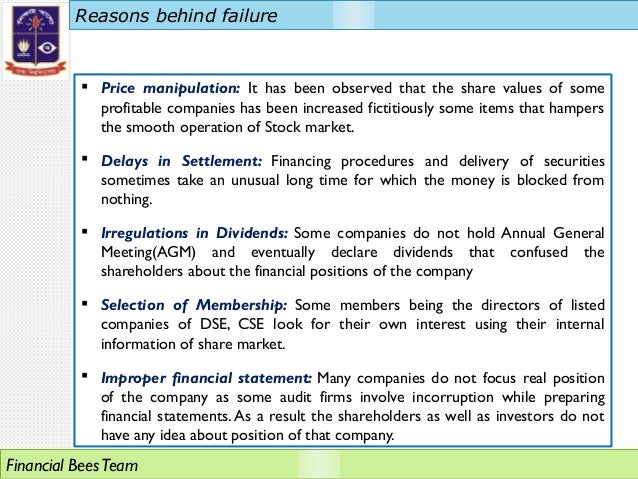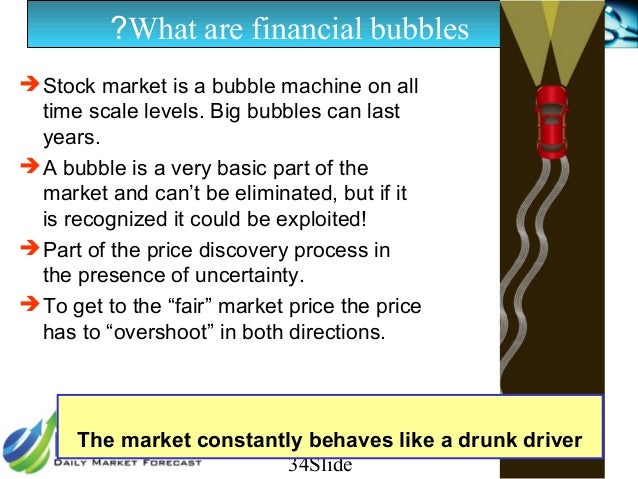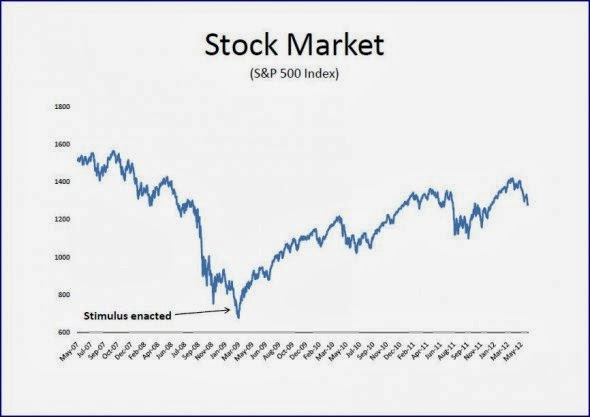Ppt stock market manipulation definition
Each course has a stipulated number of credit units attached to it. This may be two, three or four. The number of credit units attached to each course is related to the content of the course.
A two-credit unit course, for instance, is less in content than a four-credit unit course.
Market Manipulation
The number of credit units assigned to a given course is determined by the university. The usual number of times that a class meets per week for two credit units for the course per semester is two times, etc. The absolute minimum aggregate credit unit required for graduation in this Department units.
An Aegrotat degree is an unclassified degree awarded by the universityon compassionate grounds, to a final year student who unable to complete a final year examination on account of permanent disability as certified by the Director of Medical Services, University of Nigeria.
Sc DEGREE PROGRAMME IN ECONOMICS. FIRST YEAR [FIRST SEMESTER].
FIRST YEAR [SECOND SEMESTER]. SECOND YEAR [FIRST SEMESTER]. SECOND YEAR [SECOND SEMESTER]. THIRD YEAR [FIRST SEMESTER].
THIRD YEAR [SECOND SEMESTER]. FINAL YEAR [FIRST SEMESTER]. FINAL YEAR [SECOND SEMESTER].

The nature and significance of economics; The methodology of economics; Economic tools of analyses; Theories of demand and supply; Elasticity analysis; Dynamic theory of price: Predictions of price theory, Production theory: Output, cost, law of diminishing returns; Market structure: Perfect competition, monopoly, oligopoly etc; Elementary theory of utility; Distribution theory; Demand for and pricing of productive factors; Interest rate and profit.
Elementary principles of microeconomics and macroeconomics; National income estimation; The circular flow of income: Injections, withdrawals and the multiplier; Income determination: Exchange rate and comparative advantage; Foreign trade and domestic economy; Economic growth; Elementary notion of economic planning; Introduction to Marxist economic theory.
The nature, scope and purpose of accounting; Evolution of accounting divisions; The users of financial statements and their information requirements; Roles and types of accountants; Accounting Theory: Concepts of Business, organization and management: Definitional problems, Evolution of management theory, relevance of management theories to business organization, non business organization and the household; Management functions; Business environment: Meaning and scope of statistics; Statistical methods and their purposes; Data: Introduction to microeconomics; Problem of scarce resources; Allocation of resources in product and factor markets with applications to Nigeria and other economies; Supply and demand theory; Cobweb theory; Theory of consumer behavior: Production theory; Cost theory and cost curves; Pricing of production factors; Pricing and output decisions under perfect competition, monopoly, oligopoly, monopolistic competition, duopoly, duopsony, monopsony; General equilibrium of exchange; Theory of comparative costs.
Introduction to macroeconomics; Goals of macroeconomic analysis; National Income Accounting; Alternative approaches to GNP estimation; GNP and related macroeconomic aggregates; Conceptual problems of estimation and use of national accounts; Introduction to a simple macro-model of a market economy.
Working Group on Financial Markets - Wikipedia
Building the core macroeconomic model: Trial balance and adjustments; Preparation of financial statements of business concerns; Adjusting and closing the accounts; Accounting for and controlling cash; Bank reconciliation; Inventories and cost of goods sold: Basic sampling and surveys; Types of simple random sampling; Expectation and variance of sample mean; Estimation of population variance; Normal approximation to sampling distribution; Stratified random sampling; Correlation theory [including linear correlation, measures of correlation, derivation of least squares lines, standard errors of estimates, explained and unexplained variations, correlation coefficients, correlation of time series etc]; Analysis of variance- total variation, variation within and between treatments, F-test, One- Two- ways classifications]; Non-parametric tests — Mann-Whitney U tests; Sampling and sampling distributions; Estimation theory; Hypothesis testing; Regression analysis: Simple and Multiple; Statistical tests of significance; Multiple Analysis of Variance.
Jacobian and Hessian matrices; Quadratic forms and applications to optimization in economics cost minimization, profit maximization, utility maximization, comparative statics, etc. Kuhn-Tucker conditions and applications to consumer and producer theory; Second-order differential equations; Second-order difference equations; Methods of solution and their stability properties.
Relevance of ICT in Economics; Understanding EXCEL: PC-GIVE, MICROFIT, E-VIEWS, STATA, MATLAB, OX-METRICS, RATS, GAUSS PROGRAM etc; Understanding SPSS: Introduction to health economics; Demand for health and healthcare; Production and supply of healthcare; Introduction to the market for healthcare; Market failure and the role of the government in health and healthcare; Introduction to and the organization of the Nigerian health sector: National Health Insurance Scheme.
Concepts of human shake your moneymaker and human capital; Origin of the concept of human capital; Importance of human capital in economic development; Strategies for the development of human capital, education, health and skills training; Human capital theories: Significance of labour in economics; Labour force: An overview of the Nigerian economy: Advanced and mathematical treatment of the theory of consumer behaviour: Revealed preference theory, calculation of income and substitution effects, calculation of compensating and equivalent variations; Linear programming in utility maximization; Advanced price and output determination under perfect competition, monopoly, oligopoly etc; Exchange theory: Utility maximisation under uncertainty: Concept of National Income; Classical, Keynesian and Monetarist systems compared; Theories of consumption and investment; Income determination; Equilibrium in commodity market; Equilibrium in money market; Equilibrium in labour and output markets.
Aggregate demand and aggregate Supply and economy-wide equilibrium; Simultaneous equilibrium in commodity and money markets; the IS-LM analytical apparatus in the discussion of relative effectiveness of monetary and fiscal policies; Unemployment, inflation and government policies; International income transmission; Theories of economic growth.
A broad survey of the main schools of economic thought from the Orients to the scholastics; the mercantilist doctrine and the bullionists; Physiocracy and the development of macroeconomics; The development of quantity theory of money; Smithian political economy; Classicism: Say; The German historical school; Theory of distribution; The development of socialist and marxian economic thoughts.
Time for Fed to disprove PPT conspiracy theory - MarketWatch
The rise of the marginal school: Gossen and Stanley Jevons; The marginalist revolution: The structure of a financial system; Definition of financial institution; Financial Markets: Bank of Industry, Bank of Forexxpress, Federal Mortgage Bank of Nigeria, Urban Development Bank, Nigerian Export and Import Bank NEXIM ; Financial Regulation: Securities and Exchange Commission, Nigeria Stock Exchange, Central Bank of Nigeria etc; Merchant Banking.
An overview of monetary economics; Commercial banking: Nature and scope of econometrics; Stages in econometrics research; Revision of correlation analysis; Ordinary least squares: Treatment of major econometric problems with special emphasis on causes, consequences, detection and correction autocorrelation, heteroscedasticity and multicollinearity ; Identification problem; Dummy variable regression models; Distributed lag models; Simultaneous equations models; Some estimation techniques for simultaneous equations models indirect least squares, two-stage least squares, three-stage least squares ; Introduction to qualitative response regression models linear probability model, logit model, tobit model, probit stock market worksheets for middle school. Introduction to operations research; solving operations research models; Phases of an operations research model; Linear pogramming models: Assignment model algorithms and iterations and trans-shipment model algorithms and iterations ; Network models: Shortest route problem, CPM and PERT; Game theory and decision analysis; Markov chains.
Ppt Stock Market Manipulation Example
Applications of optimization techniques to the analysis of monopoly behaviour: Theories of international trade: Introduction to the concepts of population and demography; Methods and theories of demography; Introduction to population studies focusing on ppt stock market manipulation definition the causes, mechanisms and consequences of variety of demographic phenomena; The sources and nature of population data; Population data: Nature and origin of development of economics; Development problems; the new economic views of development, Growth versus development, Multi-disciplinary view of development and development economics, Three core values of development, Characteristics of less developed countries, Distinction between development and underdevelopment; The nature of development gaps between poor and rich nations; Growth versus equity debate; Some growth strategies — balanced growth strategy nz dollar currency rates unbalanced growth strategy; Term paper.
Long-term structural changes associated with development; Growth and structural change: Basic distinguishing feature of bourgeois method ppt stock market manipulation definition analysis and of dialectical method; Historical materialism; Classification of social systems; Theory of social classes; Marxist theory of capital accumulation; Surplus value; Stages of capitalist development; Emergence and advancement of capitalist development; Emergence and advancement of capitalism; Metropolitan and satellite economic relations; The struggle against colonialism and neocolonialism; Stages of socialist development; Emergence and advancement of socialism; Theories of human freedom in society: The concept of research: Fundamental quantitative relationships and proofs of basic concepts; Theory of games and applications to oligopoly graphs on the stock market crash during 1929 Production theory and market structures: General equilibrium and disequilibrium: Income determination from simple closed economy to a four-sector economy; Detailed theories of consumption and investment functions; The classical and Keynesian theories of employment and output; Capital theory; Theory of inflation; Business cycle Models and forecasting; Real business cycle models; The linking of these issues to leading problems in public policy.
The rationale for the existence of the public sector; Formulation of national policy; Planning: Elements of fiscal policy: The meaning and nature of public policy; The process and scope of public policy analysis; Concepts of social welfare; Public policy and the public interest; Theories and their applications to public policy; Techniques of public policy analysis: Demand for Money Theories: Bretton Woods system; Different exchange rate regimes; Role and operations with reference to LDCs.

Applied topics in statistical estimation: Indirect least squares, Instrumental variables, 2-stage least squares; Tests for simultaneity; Granger causality test. Matrix treatment of multiple regression; Non-linear regression models; Estimation of linear and non-linear regression models; Approaches to estimating non-linear regression models; Introduction to qualitative response models including logit, probit, and Tobit models, ordinal logit and multinomial logit]; Modeling count data; Duration models; Panel data analysis.
Advanced treatment of differentiation and integration with applications to economics ; Difference and differential equations; Advanced treatment of matrices; Advanced treatment of input-output analysis; General equilibrium analysis; Advanced treatment of mathematical programming models goal and dynamic programming with relevant applications in Economics; Optimal control theory and its applications in economics; Queuing theory and its applications in economics; Game theory and its applications in economics.
STOCK EXCHANGE EXPLAINED IN 2 MINUTESNature and scope of energy economics: Introduction to production economics; Production and the economy; Production methods; Production facilities and economics of plant maintenance; Materials inputs; Plant location and feasibility; Organizational structure and human factors; Production planning and control including use of GANTT charts, logical framework and CPM etc ; Types and calculation of costs, budgets types, preparation and evaluation of budgets ; Job design, evaluation, merit rating, and compensation; Production investment economics including viability analysis using undiscounted and discounted measures of project worth ; Product development.
Vital rates and ratios; Techniques of population projection: Development as a generalized process of capital accumulation; Optimum accumulation and absorptive capacity; Sources of capital formation and savings policy; Growth, welfare improvements and the role of the state; Good governance and social protection; Industrialization; Agricultural development and unemployment; Growth, poverty reduction and inequality nexus: Planning and policy development; Types of planning and planning durations; Manpower planning; Planning models: The Economics of climate change: The concept of industrial relations; Theories of industrial relations; Trade unions: The project concept; the project cycle; Data requirements and sources; The feasibility dimension; Identification and analysis of project costs and benefit cash flows ; Comparison of costs and benefits: The project and overall view of economic development programming; Identification and selection of projects; Project analysis: The student is expected to display a firm grasp of economic theory being investigated with good mastery of research methodology and econometrics.
Referencing ——————— ———————————————10 marks. Soundness and logic of argument with respect to ability to synthesize the literature …………………………………………………………………10marks. Powered By Tenece Professional Services. Home How To's UNN Mail UNN Portal ResearchGate Contacts Maps Search UNN Web. Economics — Course Module 1. Aegrotat Degree An Aegrotat degree is an unclassified degree awarded by the universityon compassionate grounds, to a final year student who unable to complete a final year examination on account of permanent disability as certified by the Director of Medical Services, University of Nigeria.
Simple and Multiple; Statistical tests of significance; Multiple Analysis of Variance ECO Kuhn-Tucker conditions and applications to consumer and producer theory; Second-order differential equations; Second-order difference equations; Methods of solution and their stability properties ECO Mastery of relevant literature —————————————————10 marks Theoretical content —————————————————————10 marks Soundness and logic of argument with respect to ability to synthesize the literature …………………………………………………………………10marks Analysis: Appropriateness of method of analysis reliability and validity issues —15 marks Ability to meaningfully interpreted results ————————————15 marks Findings and Recommendations: ELECTIVES [Any 2 units to be chosen from the list below].
Basic Elements of Landforms and the Hydrosphere. ELECTIVES [Any 2 Units to be chosen from list below].

Basic Elements of the Atmosphere and Biosphere. History and Structure of the Nigerian Economy 1. ELECTIVES [Any 2 Units to be Chosen from the list below]. History and Structure of the Nigerian Economy II. FACULTY ELECTIVES [Any 2 or 3 Units from list below].
ELECTIVES [Any 2 units from the list below]. ELECTIVES [Any 2 units to be chosen from list below]. ELECTIVES [Any 4 units to be chosen from list below].